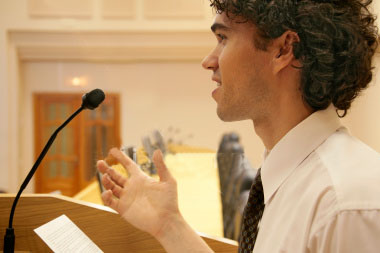
In order for this church program’s audio quality to be at an acceptable level, these problems needed to be addressed and ultimately corrected.
Starting With The Source
Believe it or not, some of the best audio recording principles I learned in college didn’t actually come from an audio recording class.
They instead came from an information technology class.
One of the first lessons we learned in computer programming is “garbage in equals garbage out.”
There are great software programs available today which can correct some of these problems. However, if the source audio is clean, you’ll most likely have a higher quality end product.
Clean Source Audio
Clean source audio is dependent upon the entire audio chain.
As an example, let’s consider the recording of a pastor’s sermon. The audio chain will most likely include a microphone (as well as its placement), cables, a mixing board, and some sort of recording device.

As a result, our pastor’s audio signal is consistently strong and free of any unwanted noise. While the signal still requires proper EQ and compression, the end result is a highly professional sound.
In comparison, inferior equipment may produce unwanted and unfixable results. Cables and connectors are also equally important elements in the audio chain.
Even the slightest problem with an audio cable or connector will be evident in the recorded audio.
Always take the time to check every cable and connector for potential problems. If there is a problem with a cable or connector, make sure it’s taken out of the audio chain immediately.
Very few technical problems will ever just simply disappear.
